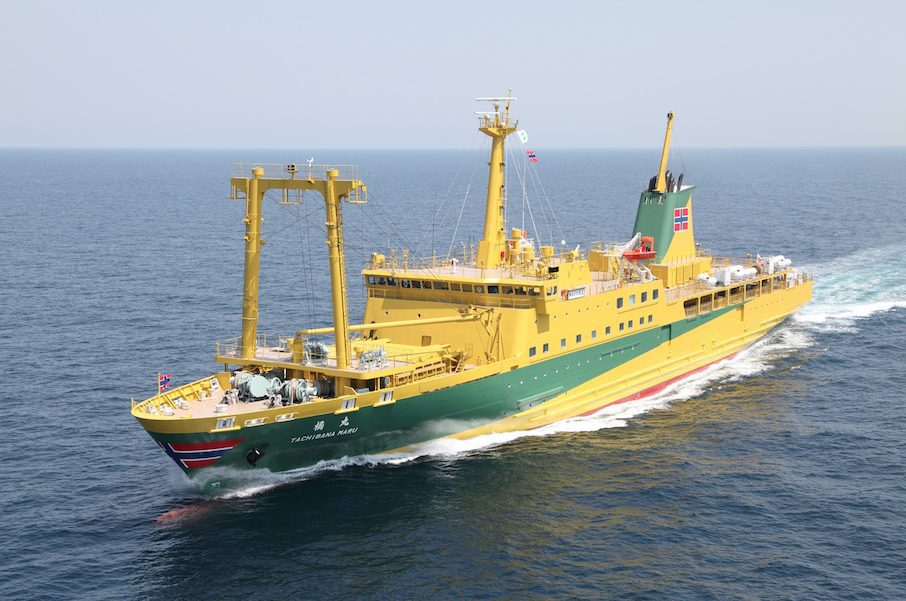The “Tachibana-Maru”. Photo courtesy MHI
Mitsubishi Heavy Industries has delivered a “super eco” cargo-passenger ship that MHI boasts as having outstanding energy savings, environmental load reduction, and enhanced passenger comfort and safety.
The new vessel, named “Tachibana-Maru”, was delivered on June 4 to Tokai Kisen Co., Ltd. at MHI’s Shimonoseki Shipyard and Machinery Works where the ship has been under construction since March 2013.
The 5,681 gross ton vessel measures 118 meters in length overall (LOA), 17 meters in width, and 8.95m in height (5.40m in draft), and can reach a service speed of 19 knots.
The ship comes equipped with a MHI-developed tandem-hybrid contra-rotating propeller (CRP) propulsion system, which is comprised of single-shaft propulsion propellers driven by low-speed marine diesel engine and electric-drive azimuth propulsion propellers.
In comparison to conventional twin-shaft propulsion systems, MHI says, the new system enables less appendages for propulsion systems such as skegs, shaft brackets and rudders and reduces water resistance, and improves energy-saving efficiency by allowing the use of only fuel-efficient low-speed diesel power in bays and channels where slower navigation speeds are required.
The new propulsion system enables the Tachibana-Maru to achieve 15.6% higher fuel efficiency than the “Salvia-Maru,” a cargo-passenger ship built by MHI and currently in service at Tokai Kisen, MHI says. In addition, the use of an electronically controlled fuel injection system enables the main low-speed marine diesel engine to achieve higher combustion efficiency, thereby ensuring that the Tachibana-Maru emits less carbon dioxide (CO2) and nitrogen oxides (NOx). The ship is also equipped with a system that utilizes exhaust gas thermal energy more efficiently.
MHI adds that the propulsion system’s ability to deliver required power using only a single-shaft configuration, with the load shared between a single diesel engine and an electric drive system, ensures higher passenger comfort by reducing both noise and vibration. In addition, the electric-drive azimuth propulsion system can be used as a stern thruster in combination with the bow thruster to enhance safety and swiftness when approaching or departing the pier.
The ship also features a new color scheme designed by Ryohei Yanagihara, a well-known Japanese artist who is also an honorary captain at Tokai Kisen.
The Tachibana-Maru will be put into service on the route between Tokyo and the Izu Islands on June 27, 2014.

 Join The Club
Join The Club











